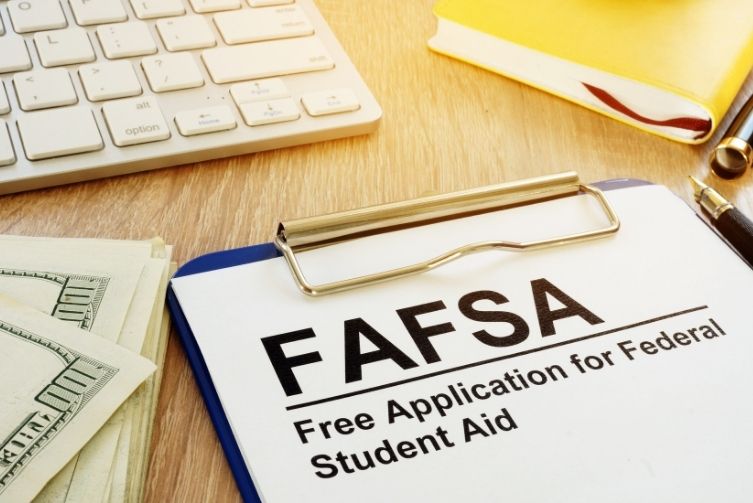Apr 15, 2021
Everything You Need to Know About FAFSA

The road to paying for college usually starts with filling out the FAFSA so it’s important to know what to expect. Every year the U.S. Department of Education awards around 121 billion in aid in the form of federal grants, work-study programs and loans. So how do you unlock some of this financial aid? Read on
to learn more and what you should know before filing the FAFSA.
What’s the FAFSA and where can I find it?
The Free Application for Federal Student Aid (FAFSA) is a form that must be completed in order for students and families to receive aid to help pay for postsecondary educational expenses. Those expenses include tuition and fees, room and board, books
and supplies, transportation and other school-related costs.
The FAFSA can be found online and can be completed on either your computer or smartphone. You can also download the myStudentAid
mobile app available on the App Store (iOS) or on Google Play (Android).
How do I know if I’m eligible?
Whether you think you may be eligible or not, it’s always recommended you fill out the FAFSA. To qualify for FAFSA, you need to be a U.S. citizen, or an eligible non-citizen (A permanent resident or a U.S. national), have a social security number,
have or are working towards a high school diploma or GED certificate and be enrolled/accepted in a degree or certificate program at a Title IV school.
Although the FAFSA won’t tell you how much aid you’ll receive, it’s used to calculate what’s known as your expected family contribution (EFC) which defines the amount a family can reasonably be expected to contribute to the cost
of college. It takes into account both the student and parent’s income and weighs the contribution against the cost of attendance which determines your eligibility for federal aid.
What Will I Need to File?
Before getting started, you’ll need to create a Federal Student Aid (FSA) ID. This ID is required in order to complete the FAFSA and it also gives you access to other U.S. Department of Education sites. Both students and parents are able to generate
their own using their social security number. If your parent does not have a social security number,
enter all zeros in the field where that information is being asked for and remember to select the option to print a signature page and have your parent sign and send via mail.
You’re considered independent if you’re:
- Married
- A veteran or active member of the armed forces
- An orphan or emancipated minor
- A homeless youth or at risk of homelessness
- A parent who provides more than half of the financial support for a child or dependent
- Receiving foster care or have been a ward of the court for any period past age 13.
Other items you’ll need:
- Your social security number or
- Your Alien Registration number if you’re not a U.S. citizen
- Email address (if applying online)
- Driver license number or state ID (no need to worry if you don’t have one, however)
- Tax records
- Any information on untaxed income like child support
- List of schools you’re interested in. Find their school codes here
What’s the FAFSA deadline?
While the federal deadline for the FAFSA is June 30, you’ll want to aim for sooner rather than later. A FAFSA is completed for the upcoming academic year with applications available on October 1. Be sure to check with the school you intend on applying to as some schools list priority filing deadlines as early as December.
I filed the FAFSA. Now what?
Once your application has been submitted, you’ll receive a summary of your application known as a Student Aid Report (SAR) for your review either via email (if provided) or mail. The report is also sent to the schools you’ve listed in your
application. If schools need further documentation or information, they will contact you directly with what they need. You’ll want to be on the lookout for college acceptance letters which are usually accompanied by award letters that will outline
how much financial aid you’ll receive at that school.
Need to talk to someone?
If you have questions, contact the Federal Student Aid Information Center at 800-433-3243 or 800-730-8913 for applicants who are hearing-impaired.
You can also get help by contacting the FSAIC via online chat and email or through their social media pages on Facebook and Twitter.

